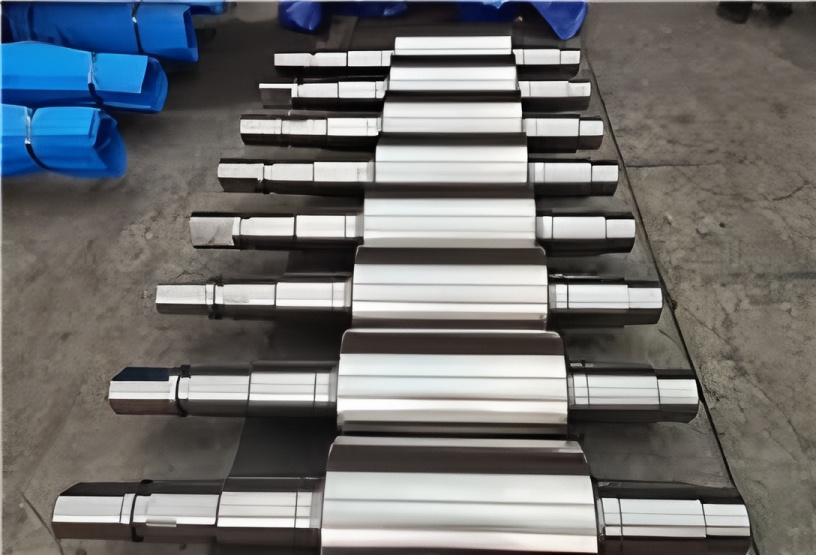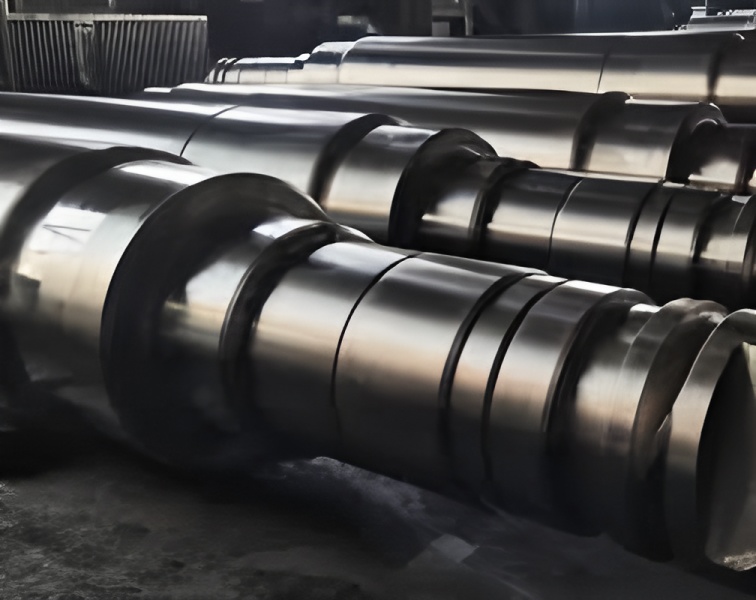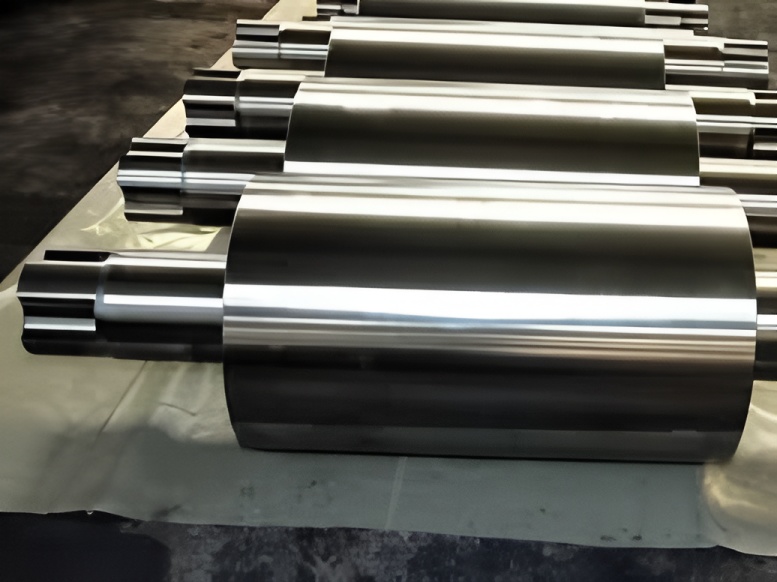High-speed steel rolls are characterized by high hardness, excellent red hardness, and superior wear resistance, making them widely used in the steel rolling industry. This article reviews the composition, structure, properties, manufacturing methods, and application results of high-speed steel rolls, along with key considerations for their effective usage.
Keywords: High-speed steel rolls, use of HSS rolls, applications of HSS rollers
With the maturation of rolling processes and advancements in steel rolling technology—including the ongoing pursuit of higher rolling efficiency, improved product quality, and reduced costs—roll manufacturing technology is developing rapidly.
Basic Characteristics and Performance of High-Speed Steel Rolls
Main Features:
High-speed steel rolls typically use high-carbon high-speed steel with a carbon content generally above 1.5% and carbide content between 10% and 20%.
The working layer contains high levels of alloying elements such as vanadium, chromium, molybdenum, tungsten, and niobium, with total alloy content exceeding 16%. Carbides in the roll structure are mainly MC and M₂C types, which exhibit favorable morphology, high hardness, uniform distribution, and excellent wear resistance.
These rolls offer good thermal stability and red hardness, maintaining high hardness and wear resistance under conventional rolling temperatures.
They possess high hardenability, with nearly consistent hardness from the surface to the inner working layer, ensuring uniform wear resistance.
The surface hardness ranges between 80–90 HSD, with hardness variation ≤ 2 HSD.
The core material is made of high-strength alloy ductile iron, providing high roll neck strength and fracture resistance.
Benefits of Using High-Speed Steel Rolls
Steel Plant A:
After adopting high-speed steel rolls and optimizing mill process parameters, along with mastering roll surface inspection technology, the hot rolling unit reduced roll consumption from 0.7 kg/t to below 0.4 kg/t. The average rolling volume per millimeter for HSS rolls is 2.2–3.5 times that of high-chromium iron rolls. Even considering price factors, HSS rolls demonstrate a better performance-to-cost ratio.
Steel Plant B:
To enhance the surface quality of hot-rolled strip and improve roll wear and surface roughness resistance, HSS rolls were implemented in the finishing mill stands. Results show an average rolling weight of 5,500 t for HSS rolls, compared to only 2,380 t for high-chromium cast iron rolls. Based on a rolling capacity of 500 t/h, HSS rolls can operate continuously for up to 10 hours, versus 4 hours for high-chromium rolls. This reduces roll change frequency, improves mill efficiency, and lowers operational costs, offering significantly better cost-effectiveness.
Steel Plant C:
To reduce roll costs and enhance the output and surface quality of hot-rolled rebars, HSS rolls were adopted in the finishing stands. Data show that when using ordinary rolls, grooves required replacement every 4 hours (3–4 times per shift). With HSS rolls, small sizes are changed once per shift and large sizes once per day. The rolling volume per groove increased substantially, extending service life, reducing consumption costs, and saving labor and material expenses. Moreover, due to their high wear resistance and uniform hardness, HSS rolls experience less wear and allow for reduced re-machining, enabling cost-effective reuse.

Key Considerations for Using High-Speed Steel Rolls
Main Challenges:
Poor heat dissipation may lead to temperature differentials, reducing service life and potentially causing bursting or cracking. Enhancing cooling capacity to keep the roll surface temperature below 65°C is essential.
Occasional issues such as segregation or insufficient alloy elements from manufacturing may cause roll failure. Excessive material width from previous passes or high reduction rates can also increase deformation resistance and slippage, leading to groove wear or notch effects on transverse ribs.
Roll Surface Temperature Control
Controlling roll surface temperature helps manage thermal crown, limits oxide film thickness, and reduces cracking and spalling. Due to the relatively low thermal conductivity of HSS roll material, sufficient cooling water is critical. Cooling should be most intense where the strip separates from the roll, then gradually decrease along the roll arc. Water pressure, temperature, and quality also affect roll performance. Using flat nozzles instead of conical ones, with 3/4 of the water directed to the tapping side and the central water volume twice that at the roll end, improves cooling. Adjusting the pipeline to control pressure (0.5–0.7 MPa), flow rate, and nozzle angle (20–30° against the roll rotation) ensures effective cooling. The roll surface temperature should remain below 60°C within 10–20 minutes after removal.
Oxide film thickness is a key indicator. insufficient cooling leads to thick, brittle films that peel easily, while excessive cooling results in thin, rough films—both causing surface defects on hot-rolled strip.
Cracks from mechanical overload, slippage, overheating, or impact must be removed. Thermal cracks from mill shutdowns are less critical and can be managed within acceptable limits.
Load Control
Reasonable load is crucial for protecting the oxide film on HSS rolls. Excessive rolling load is a direct cause of film damage. redistributing load to other stands or adjusting reduction in roughing stands can help reduce slab thickness before finishing, preserving the oxide film.
Lubrication Effectiveness
The high friction coefficient of HSS rolls increases rolling load by 10%–20% under similar conditions. Lubrication is the most effective way to ensure reasonable load.
Rolling lubrication reduces the friction coefficient, stabilizes friction forces, decreases roll surface temperature, minimizes thermal cracks and surface stress, and improves roll surface condition. Originally, 3# grease was used for lubrication; now, a centralized lubrication system has been implemented to ensure consistent performance.
Maintenance of HSS Rolls in Slit Rolling
Cooling water must be activated before the roll contacts hot steel to pre-cool the groove. In addition to circular cluster cooling tubes at the mill exit, water-spreading bags should be installed at both entry and exit guides to enhance cooling and prevent thermal cracks.
Due to their low accident resistance, pile-ups are more common in slit-rolled ribbed bar production. After a pile-up, red steel stuck in the groove rapidly increases roll temperature. Cooling water should not be stopped immediately; instead, continue cooling until the jammed steel turns black before addressing the incident.



